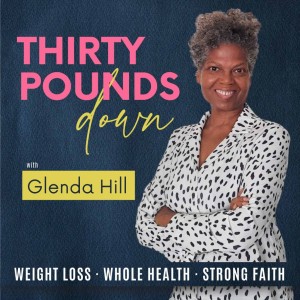
Welcome Friend. Are you on a journey to lose weight around the waist that seems to stick no matter what you try? That tightness or discomfort in your tummy may be bloating, belly fat, or both. Did you know that eating colorful fruits, veggies, and flowers rich in flavonoids can be the secret to trimming up to 9% of that stubborn belly fat? Yes, you heard it right!
Join me for "Bloating, Belly Fat, and The Flavonoid Secret To Healthy Weight Loss." In this episode, you'll discover how flavonoids can be your all-natural solution for managing blood sugar, supercharging your metabolism, reducing inflammation, and gaining control over your appetite. Let's go to the show!
➖➖➖➖➖➖➖➖➖➖➖➖➖➖➖
As mentioned in the episode Check Out the list of food flavonoids according to their subclass flavonoids.
Take advantage of the health and healing benefits of flavonoids by adding at least 2 cups of fruits and 2-½ cups of vegetables (more if you like) to your daily meals.
Anthocyanins: Berries, Blood oranges, Currants, Pears, Plums, Radishes, Red cabbage, Red grapes, Red onions, Grape juice, Hibiscus
Flavon-3-ols: Apples, Apricots, Cocoa, Dark chocolate, Tea (green, white, black, oolong), Grape juice
Flavonols: Apples, Arugula, Blueberries, Broccoli, Chili peppers (green), Green onions (scallions), Kale, Red onions, Parsley, Spinach, Tea, Watercress, Chamomile, Calendula, Elderflower, Nasturtium, Violet, Lilac, Rose
Flavones: Celery, Citrus zest (peel), Chili peppers (green), Oregano, Parsley, Peppermint, Thyme
Flavanones: Grapefruit, Lemons, Limes, Oranges, Pummelos
When using edible flowers, Ensure that they have been grown without pesticides and are safe for consumption. Additionally, it's a good practice to start with small quantities to test for any potential allergies or adverse reactions.
Hibiscus: Hibiscus flowers are rich in anthocyanins and flavonoids, which give them their vibrant red color. They can be used to make teas and infusions.
Chamomile: Chamomile flowers contain flavonoids such as apigenin. They are commonly used to make calming herbal teas.
Calendula: Calendula flowers are rich in flavonoids and are used in salads, as garnishes, and to make herbal teas.
Lavender: Lavender flowers contain flavonoids and are often used in culinary dishes and for making lavender-infused beverages.
Dandelion: Dandelion flowers are rich in flavonoids and can be added to salads or used to make dandelion wine.
Elderflower: Elderflower blooms are high in flavonoids and are used to make elderflower cordial, syrups, and desserts.
Violet: Violet flowers contain flavonoids and can be used as a garnish in salads or to make violet jelly.
Rose: Rose petals contain flavonoids and are used to make rose water, rose petal jam, and various desserts.
Nasturtium: Nasturtium flowers contain flavonoids and are often used in salads for their peppery flavor and vibrant colors.
Lilac: Lilac flowers are edible and can add flavor and fragrance to syrups, jellies, and desserts.
➖➖➖➖➖➖➖➖➖➖➖➖➖➖➖
🙏I pray you were blessed by this episode of Thirty Pounds Down.
Chapters
00:00 Intro music
00:14 What are Flavonoids?
01:25 Failed Attempts Bloat & Belly Fat
02:45 My Body Weight Success Method
03:35 Regulate Blood Sugar
04:22 Biblical Eating Guide
05:36 Science On Flavonoids
06:20 Eat Fruits & Flowers
06:50 How Much Flavonoids Needed
07:35 Holistic Approach
07:50 Christian Motivation
➖➖➖➖➖➖➖➖➖➖➖➖➖➖➖➖➖➖➖
🙏Subscribe, and tune in each week for real talk on Christian weight loss, whole health, and strong faith.
🙏Share this episode with your community
Thank You for listening to Thirty Pounds Down🎵
💓
Glenda Hill
🎦 For Healthy Living Tips Watch My Youtube Channel
Version: 20241125
No comments yet. Be the first to say something!